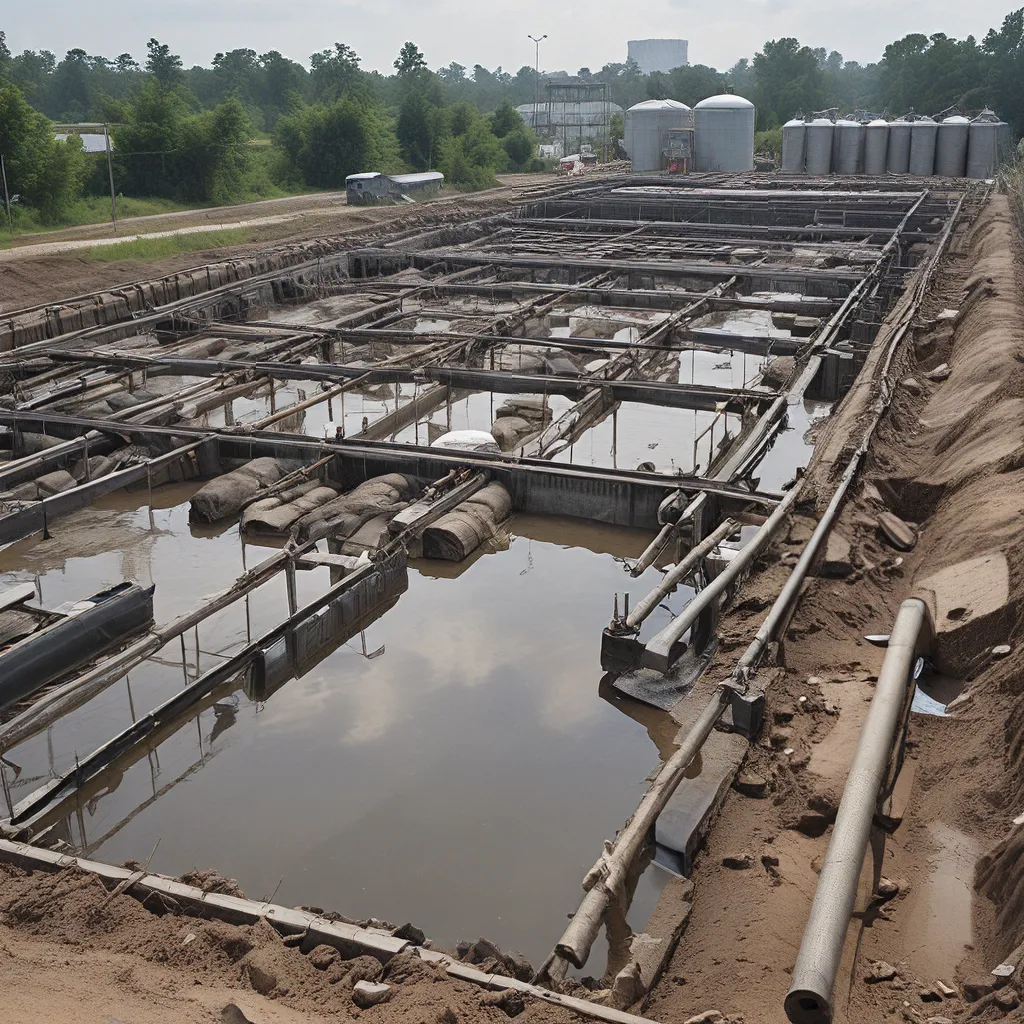
As the world becomes increasingly unpredictable, it’s more important than ever to ensure that critical infrastructure like wastewater treatment facilities are prepared to withstand and recover from disasters. I’ve seen firsthand how even a minor disruption can wreak havoc on communities, leaving them without access to essential services. That’s why I’m passionate about exploring the intersection of wastewater treatment and disaster preparedness – it’s a crucial part of building a more resilient future.
The Importance of Wastewater Treatment in Disaster Scenarios
When disaster strikes, whether it’s a natural event like a hurricane or a human-caused crisis, the ability to maintain wastewater treatment operations can be a matter of public health and safety. Untreated sewage poses serious risks, from the spread of waterborne illnesses to the contamination of water sources and the environment.
FEMA identifies “Response” as one of the key mission areas in their National Preparedness Goal, highlighting the need to “Provide lifesaving medical treatment via Emergency Medical Services and related operations and avoid additional disease and injury by providing targeted public health medical and behavioral health support and products to all affected populations.” Ensuring the continuity of wastewater treatment services is a critical part of this response effort.
Moreover, the reliable functioning of wastewater infrastructure is essential for the “Recovery” phase, where the goal is to “Restore and improve health and social services capabilities and networks to promote the resilience, independence, health (including behavioral health), and well-being of the whole community.” Without a properly functioning wastewater system, communities would struggle to get back on their feet after a disaster.
Preparing Wastewater Treatment Facilities for Emergencies
So, how do we ensure that wastewater treatment facilities are prepared to withstand and respond to disasters? There are several key strategies:
Redundancy and Backup Systems
One of the most important aspects of disaster preparedness is building redundancy into the system. This means having backup power sources, alternative treatment methods, and even duplicate facilities that can take over operations if the primary site is compromised.
The Cybersecurity and Infrastructure Security Agency (CISA) recognizes wastewater treatment personnel as “Essential Critical Infrastructure Workers,” underscoring the crucial role they play in maintaining continuity of service during emergencies.
Comprehensive Emergency Planning
Successful disaster preparedness also requires thorough emergency planning. This includes identifying potential risks, developing detailed response protocols, and regularly testing and updating these plans. Wastewater treatment facilities should work closely with local emergency management agencies to ensure their plans are integrated with the broader community response.
Adaptable and Resilient Infrastructure
In addition to redundancy and planning, wastewater treatment facilities need to invest in infrastructure that is adaptable and resilient. This might include designing buildings and equipment to withstand the impact of natural disasters, implementing advanced monitoring and control systems, and incorporating flexible treatment processes that can handle a range of conditions.
The National Response Framework emphasizes the importance of “Stabilize critical infrastructure functions, minimize health and safety threats, and efficiently restore and revitalize systems and services to support a viable resilient community.” Investing in resilient wastewater infrastructure is a key part of this mission.
Collaborating for Comprehensive Disaster Preparedness
Disaster preparedness is not something that wastewater treatment facilities can tackle alone. It requires a collaborative effort involving a wide range of stakeholders, including local governments, emergency responders, public health officials, and the community at large.
By working together, these groups can identify vulnerabilities, share best practices, and develop coordinated response plans. This holistic approach helps ensure that wastewater treatment is seamlessly integrated into the broader disaster management strategy.
The Role of Technology in Enhancing Resilience
As we look to the future, technology will play an increasingly important role in enhancing the resilience of wastewater treatment facilities. Advanced monitoring and control systems, predictive analytics, and automation can all help operators anticipate and respond to emerging threats.
For example, remote sensing and real-time data analysis can help detect issues before they escalate, allowing for proactive interventions. And by automating certain processes, facilities can maintain critical functions even when staffing is limited during a crisis.
At Alpha Wastewater, we’re always exploring ways to leverage the latest technologies to improve the resilience and reliability of our services. It’s an ongoing journey, but one that’s essential for ensuring the continuity of this vital infrastructure.
Embracing a Culture of Preparedness
Ultimately, effective disaster preparedness requires more than just technical solutions – it also requires a cultural shift within the wastewater treatment industry. Operators, engineers, and administrators need to prioritize emergency planning and resilience as core parts of their mission, rather than afterthoughts.
This means investing in training, conducting regular drills and exercises, and fostering a mindset of adaptability and problem-solving. It also means being willing to learn from past disasters, identifying areas for improvement, and continuously refining emergency plans.
By embracing a culture of preparedness, the wastewater treatment industry can play a crucial role in safeguarding communities and ensuring that essential services remain available, even in the face of the most daunting challenges.
Conclusion: Building a More Resilient Future
As I reflect on the importance of wastewater treatment in disaster scenarios, I’m reminded of the profound impact that a well-prepared and responsive system can have. When the unthinkable happens, and communities are left reeling, the ability to maintain essential services like wastewater treatment can mean the difference between a swift recovery and a protracted crisis.
That’s why I’m so passionate about this topic – it’s not just about technical solutions or policy frameworks, but about building a more resilient future where we’re better equipped to weather the storms, natural or otherwise, that come our way. It’s about prioritizing preparedness, fostering collaboration, and embracing the power of innovation to safeguard our communities and the environment we all share.
So, whether you’re an industry professional, a policymaker, or a concerned citizen, I encourage you to explore the fascinating intersection of wastewater treatment and disaster preparedness. There’s so much more to discover, and together, we can work towards a future where the flow of essential services is never interrupted, no matter what challenges arise.